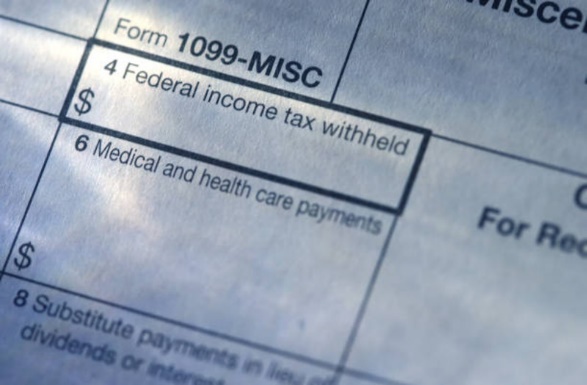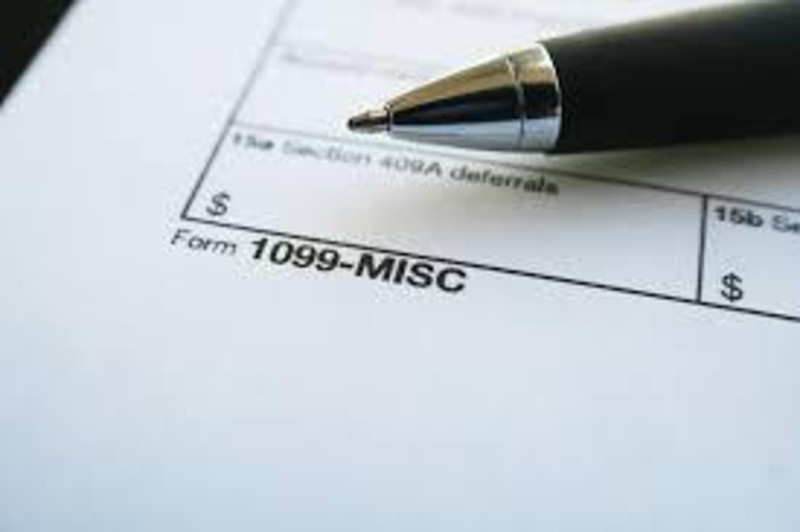Understanding the Basics of Form 1099-DIV: A Comprehensive Guide
Jan 07, 2024 By Triston Martin
Form 1099-DIV is a crucial document for anyone with investments that pay dividends. It's an annual tax form sent by banks and other financial institutions to investors who receive dividends and other distributions from any type of investment during the calendar year. These dividends are taxable income, and Form 1099-DIV provides the information you will need to report these payments on your income tax return. Understanding the basics of this form is essential to accurately report your income and avoid potential issues with the IRS. This guide aims to provide a comprehensive overview of the Form 1099-DIV, its importance, and how to interpret the information it contains.
What is Form 1099-DIV?

Form 1099-DIV, also known as the "Dividends and Distributions" form, is an Internal Revenue Service (IRS) form in the United States. Every year, investment companies use this form to report the dividends and other distributions, like capital gains distributions or non-taxable distributions, they've paid to investors.
This form has several boxes, each representing a different type of income. They include ordinary dividends (Box 1a), qualified dividends (Box 1b), and total capital gain distributions (Box 2a), among others. It's important for investors to understand this form, as it contains crucial information they'll need for the preparation and filing of their taxes. Ignorance or misinterpretation of this form can lead to inaccuracies on your tax return, potentially causing issues with the IRS.
Importance of Form 1099-DIV in Tax Reporting:
Form 1099-DIV is pivotal in tax reporting as all taxable dividends and distributions should be reported on your federal income tax return. This form ensures that you pay the appropriate tax amount on your investment income and helps maintain transparency with the IRS. Not only does it serve as a record of the income you've earned, but it also assists in identifying any applicable tax benefits, like the lower tax rate on qualified dividends.
The IRS receives a copy of every 1099-DIV issued to you, ensuring they have a record of your reported income. Incorrect or incomplete reporting may result in audits or penalties. Hence, accurate interpretation and use of Form 1099-DIV is crucial for hassle-free tax reporting.
Understanding Different Boxes in Form 1099-DIV:
Box 1a: Ordinary Dividends:
This box includes the total amount of dividends you received during the year that are taxed at ordinary tax rates.
Box 1b: Qualified Dividends:These are dividends eligible for a lower tax rate, typically 0%, 15%, or 20% depending on your income and filing status.
Box 2a: Total Capital Gain Distributions:This box includes the total capital gain distributions you received, which are subject to a lower tax rate than ordinary dividends.
Box 3: Non-Taxable Distributions:These are non-taxable dividends, such as those from money market funds or return of capital distributions.
Box 6: Foreign Tax Paid:If you received dividends from foreign investments, this box shows the amount of foreign tax paid on your behalf.
How to Interpret the Information in Form 1099-DIV?
Interpreting the information in Form 1099-DIV is straightforward once you understand the purpose of each box. Each box corresponds to a line on your tax return where that amount should be reported. You must include the amounts from Boxes 1a, 1b, and 2a in your taxable income, while the amount in Box 3 is typically not taxable and can be subtracted from your cost basis. Box 6 might allow you a credit or an itemized deduction on your tax return for foreign taxes paid. Always remember, if you're unsure about anything, it's best to consult a tax professional. Hence, a thorough comprehension of Form 1099-DIV is essential for accurate and trouble-free tax filing.
Common Mistakes to Avoid When Reporting Using 1099-DIV:
- Reporting the amount in Box 1b (qualified dividends) on your tax return as ordinary dividends, resulting in overpayment of taxes.
- Forgetting to include the non-taxable distributions from Box 3 in your cost basis, which would lead to double taxation.
- Failing to report foreign taxes paid in Box 6 and missing out on potential credits or deductions.
Consequences of Misreporting Information from Form 1099-DIV:

Misreporting information from Form 1099-DIV can have serious consequences. The IRS has strict rules and regulations for reporting income, and failure to comply with these rules can result in penalties, fines, or even audits. Inaccurate reporting may also lead to an incorrect tax liability, resulting in overpayment or underpayment of taxes.
Tips for Efficient Handling of Form 1099-DIV:
- Keep all your Form 1099-DIVs in a safe place to ensure you have the necessary information for tax reporting.
- Use electronic versions of the form when possible, as they are easier to manage and less likely to get lost or damaged.
- Double-check all the information on Form 1099-DIV before using it for tax reporting, including your personal information and the amounts reported.
- Seek professional help if you have any doubts or concerns about how to report the information from Form 1099-DIV on your tax return.
Conclusion:
Form 1099-DIV is a crucial document for tax reporting, providing information on taxable dividends and distributions received from investments. It's important to understand the different boxes in this form and how to interpret the information they contain accurately. Misreporting or misinterpreting this form can lead to issues with the IRS, making it essential to handle Form 1099-DIV with care and seek professional help if needed. By following the tips mentioned above and keeping track of your Form 1099-DIVs, you can ensure a smooth and accurate tax reporting process. So, be sure to review and understand your Form 1099-DIV when it arrives each year to avoid any potential issues with the IRS. Happy tax filing!

Outstanding Shares: What is it?
Jan 30, 2024
Shares outstanding are the total number of shares of a company's stock, usually controlled by all stakeholders. This number includes both Outstanding and Floating Shares.

Cons and Advantages of Combining Home and Auto Insurance
Dec 31, 2023
Customers who "bundle" their policies—that is, buy both types of insurance from the same carrier—often receive discounts from the insurer. They do this because you are more likely to buy more policies and there is less chance that you will move to a different insurer when you receive the discount.

Oregon Mortgage Lenders
Dec 07, 2023
These mortgage lenders can assist you regardless of whether you are a first-time home buyer, need to make a modest down payment, are looking for a lender that doesn't mind a poor credit score, prefer an internet lender, or want to borrow against the equity in your home.

All You Need to Know about Subprime Mortgage
Oct 11, 2023
Customers with weak credit histories may apply for subprime mortgages, which carry high-interest rates. These loans allow people with bad credit to purchase houses, but they come with a high degree of risk

Offer in Compromise: Get to know How to Settle Your Tax Debt?
Oct 09, 2023
You can negotiate a reduced tax liability settlement using an Offer in Compromise. It may be a viable alternative if you cannot fully pay your tax bill.

Should You Purchase A Rental Truck Insurance?
Nov 16, 2023
When renting a moving truck, you should find out if it is covered by insurance. After all, if most of your things are in the truck and something bad happens, you might want to know what kind of protection you have. Here are some things to think about before you rent a moving truck

Best Real Estate Agencies in 2023
Dec 05, 2023
The real estate market across the country is rising. In many parts of the country, a home will be on the market for a week before it is swamped with bids from potential buyers. Because mortgage rates are at record lows, the market favours sellers like never before, and buyers are snapping up homes on the market faster than ever before

All You Need To Know About Absolute Return
Nov 30, 2023
The rate of return earned on an asset over a specified time is called its absolute return. We are looking at the percentage gain or loss that an investment vehicle such as a stock or mutual fund has experienced over time.

Do You Know: What Is Reinvestment Risk?
Feb 05, 2024
Cash flows from an investment, such as interest or coupon payments, are subject to reinvestment risk if the investor is concerned about not being able to reinvest them at a rate of return at least equal to the current rate. This new interest rate is known as the reinvestment rate. Since zero-coupon bonds never pay a coupon, they are risk-free investments.

Top Consumer Goods Stocks to Consider for Your 2024 Investment Portfolio
Sep 10, 2024
consumer goods stocks, 2024 stock market, investing in consumer goods

Get To Know Which States Tax Social Security Benefits
Feb 27, 2024
Moving to a lower-tax state or country can help retirees stretch their money further. Social Security and pensions are exempt from taxation in these states.

Understanding Texas Home Equity Loans and HELOCs
Mar 19, 2024
Discover the ins and outs of Texas home equity loans and HELOCs in this comprehensive guide. Learn how they work and their benefits.